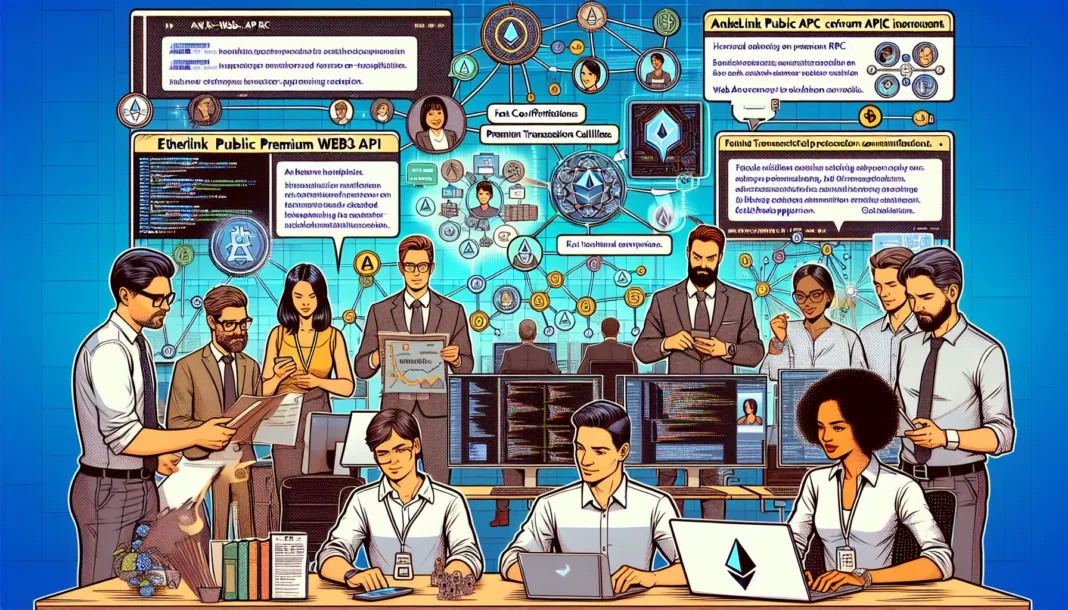KEY TAKEAWAYS
- Ankr launches Etherlink on its Web3 API service, enhancing dApp development on the Etherlink blockchain.
- Etherlink, built with Tezos Smart Rollup technology, offers fast, decentralized scaling for EVM-based applications.
- Ankr’s Etherlink RPCs simplify blockchain interactions, providing developers with tools for high-performance dApp creation.
Ankr has announced the release of Etherlink on its Web3 API service, marking a significant development for developers aiming to build advanced decentralized applications (dApps) on the Etherlink blockchain. This new feature allows Web3 API users to access Etherlink Public and Premium Remote Procedure Calls (RPCs), enabling them to make request calls and receive information returns similar to running their own nodes. The announcement was made here.
Understanding Etherlink
Etherlink is a non-custodial, EVM-compatible Layer-2 blockchain built using Tezos Smart Rollup technology. It aims to provide a fast, fair, and decentralized scaling layer for Ethereum Virtual Machine (EVM)-based applications. By integrating directly into the Tezos protocol, Etherlink benefits from Tezos Layer-1 security and governance. It offers sub-second confirmations, low transaction fees, decentralized sequencer/MEV protection, and permissionless on-chain governance.
Benefits of Ankr’s Etherlink RPC Connections
Ankr’s Etherlink RPCs serve as a crucial link between developers and the Etherlink blockchain. These RPCs act as a messenger, relaying on-chain information between Etherlink nodes, applications, and end-users. This setup allows developers to execute tasks such as transactions, wallet balance updates, and ownership information retrieval without the need to establish their own Etherlink nodes.
The Etherlink RPC endpoints provide a gateway for developers to interface directly with the blockchain, eliminating the complexities of node operations. Ankr’s Premium RPC Plan offers advanced tools, including high request capacity, dedicated endpoints, prioritized requests, and WebSockets capabilities. This infrastructure supports the development of high-performance and privacy-focused dApps, while also strengthening the Etherlink network globally.
Getting Started with Etherlink
Developers interested in building on the Etherlink network can begin by accessing Ankr’s RPC Service to make their first call. The Etherlink endpoint allows interaction with the chain using standard EVM JSON RPC methods, facilitating a seamless development experience.
Why This Matters: Impact, Industry Trends & Expert Insights
Ankr’s launch of Etherlink RPC on its Web3 API service marks a crucial development for dApp developers on the Etherlink blockchain, offering enhanced access and capabilities without the need for individual node setups.
Recent industry reports indicate that EVM-compatible Layer-2 blockchains are experiencing accelerated adoption in 2025, driven by Ethereum’s scalability needs. This aligns with Ankr’s Etherlink RPC launch, which aims to provide a scalable and efficient solution for dApp development on the Etherlink blockchain.
As per insights from a DailyCoin report, Ankr’s model of staking ANKR tokens to secure and rate node providers enhances RPC reliability and performance. This supports the Etherlink RPC launch’s significance in enhancing Ethereum infrastructure and facilitating decentralized application development.
Explore More News:
Disclaimer: The views expressed in this article are those of the authors and do not necessarily reflect the official policy of CoinsHolder. Content, including that generated with the help of AI, is for informational purposes only and is not intended as legal, financial, or professional advice. Readers should do their research before taking any actions related to the company and carry full responsibility for their decisions.

